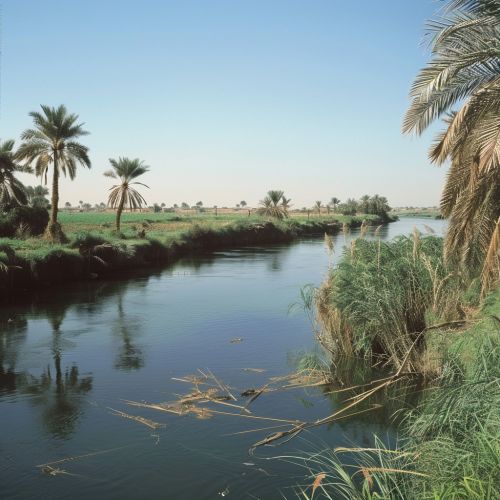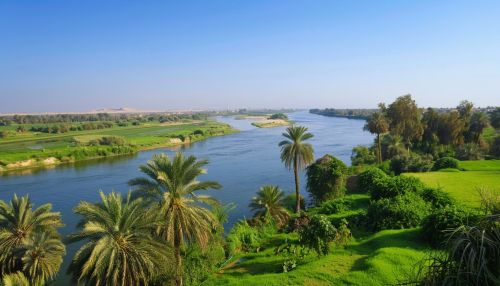Shatt al-Arab
Geography
Shatt al-Arab (Arabic: شط العرب, River of the Arabs) is a river in Southwest Asia of some 200 km (120 mi) in length, formed by the confluence of the Euphrates and the Tigris in the town of al-Qurnah in the Basra Governorate of southern Iraq. The southern end of the river constitutes the border between Iraq and Iran down to the mouth of the river as it discharges into the Persian Gulf. It varies in width from about 232 meters (761 ft) at Basra to 800 meters (2,600 ft) at its mouth. It is thought that the waterway formed relatively recently in geologic time, with the Tigris and Euphrates originally emptying into the Persian Gulf via a channel further to the west.


History
The Shatt al-Arab has a rich history dating back to ancient times. It was known to the Sumerians as the Idigna or Idigina, to the Babylonians as the Idiklat, and to the classical Greeks as the Tigris. The river was the site of the Battle of Qarqar in 853 BC, and it has been a significant location for human settlement and political power due to its importance for irrigation and transportation. The area saw major changes in the 20th century when oil fields were developed in the region, leading to rapid industrialization and urbanization.
Political Significance
The Shatt al-Arab has been a contentious issue in the relations between Iraq and Iran for many years. The river forms the border between the two countries, and disputes over navigation rights and territorial sovereignty have led to conflicts, including the Iran-Iraq War (1980-1988). The 1975 Algiers Agreement settled some of the disputes over the river, but tensions have continued to flare up periodically.
Ecology
The Shatt al-Arab is home to a diverse range of flora and fauna. The river and its tributaries create a large river delta that provides habitat for many species of birds, fish, and mammals. However, the ecology of the river has been severely impacted by pollution, dam construction, and water diversion for irrigation. Efforts are being made to restore the health of the river and its ecosystems.
Economic Importance
The Shatt al-Arab is a vital economic resource for both Iraq and Iran. It is navigable by large ships, and the port of Basra, Iraq's main port, is located on the river. The river also provides water for irrigation of agricultural lands in the region. The oil industry is another major economic sector that relies on the river, with several oil fields and refineries located along its banks.
